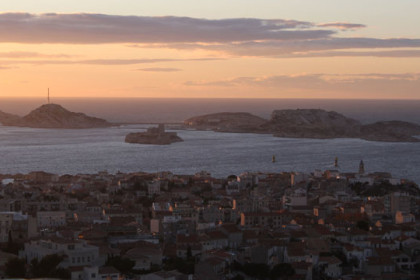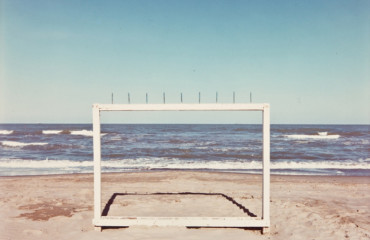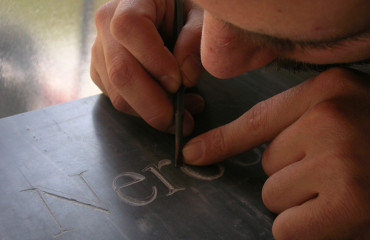
It was the 1980s and “Curiosity killed the cat” played “Misfit”, their first album.
After decades, I realize that perhaps I owe something to the English band. In their appeal to that same curiosity that today, far from any expectation and desire, led me on a trip to Marseille.
Just recently the city was appointed as “European capital of culture 2013″, although I do not deny that already some time I have observed the cultural movements between Africa and Europe rooted in this frontier land. Actually, Italy would be more appropriate as the marginal area between the two continents; but you can’t ignore history. Marseille has more Maghreb traditions than any other Italian city.
Were it not for the skin colour of its inhabitants! And yes, definitely a melting pot of races long estranged from European facts and on which today attentions, expectations and investments converge. First of all there are the architectural aspects. There’s a long list of major works underway entrusted very famous names belonging to the world of modern architecture. The gotha of the archistars met in Marseille. Just about everyone attended. From the Iraqi, Zaha Hadid, to the Marseillaise, Eric Castaldi. And then again, Massimiliano Fuksas, Norman Foster and Eric Ricciotti: all involved in the project entitled “Euroméditerranée” (www.euromediterranee.fr) to give life and dignity to the city once again. The commissioning of the construction works have also involved Roland Carta, “the Occitan architect” who gives the impression of having received task-work rather than an order (www.cplust.eu/fr).
But beyond everything, it is a massive deployment of forces and projects difficult to imagine if unless you actually look amongst the succession of outdoor construction sites. The area is that of the docks (old foodstuff warehouses of goods coming from Africa); from place de la Joliette up until the city’s natural border abruptly interrupted by the sea and mountains. Everything is new, rebuilt or under construction. The atmosphere breathless atmosphere. Rhythmic. On the one hand, the vibrant construction site works, and on the other, just beyond the city numerous banks and large companies that produce efficiency, GDP and millions of Euro.
The results? During the day la Joliette “stinks” again. Of businesses. Of dust, excavation sites and skyscrapers. At night, for the moment, it is only a taboo. For me – white-skinned unaccompanied woman – after dark, it is strongly advised not to wander alone. Is this protection maybe a bit too excessive? Who knows!
In order to delve deeper into this issue I contact the Italian-French, Vanessa Santullo (www.vanessa-santullo.net), the video-reporter and photographer, as well as Marseillese by adoption. It was the city’s lights and colours that captured her attention. And of course the people, with its load of multiculturality “It makes no sense to live in Paris ,” says Vanessa. “I go there often, but it is in Marseilles where I gather more appealing stimuli for my work.”
A work carried out on the streets to observe and scrutinize. To grasp, perhaps in the lapse of moments, the “how of the people”: how are they able to stay together, how do they mix, how do they eat, how do they smile and celebrate; together, despite their differences. Despite the roots, religion. Despite the working-class of the morning subway recognizable from their black clothing. Despite the multicolour folklore that can be seen by the clothes left hanging outside to dry, covering the facades of the buildings. Despite that inevitable chair that “someone” has left as an access road. It is like this that you understand things, the mentality. From that multitude of “prehistoric” antennas on the roofs. From the extraordinary captivating movements of a “brown” child, almost still in diapers, launched in primordial dance steps. Despite its Bo-Bo (bourgeois-Bohemian) who choose to drive in glitzy and bulky SUVs or dangerous bicycles (completely snubbing the public transportation). Despite the rising stars of culture: neighbourhoods instead of festivals, events, screenings, exhibitions that reflect the geographical area of incidence. They reflect the desire of change imposed almost from the top.
Someone speaks of “charm of disorder”. Vanessa, with her video camera and lenses, can do no more than wallow between the gorges and cultural distortions. But sometimes the blow is strong. In order to get a clearer picture all you have to do is visit the lower class neighbourhood, “Belle de mai” (www.belledemai.com).
Today it is a multimedia incubator, yesterday it was an industrial area. The transformation is still underway and it shows. Someone decided to bring a daily flow of image professionals, but around there’s still the people that produce and sell goods. There are mainly coloured people and if you’re amongst them you inevitably ask yourself where you’re at!
Marseille is like this. Inevitably old and new. Heavily hung to the future without giving up the multiform roots. From the neighbourhood just behind the old harbour – filled with fruit, fish and vegetables stalls – to the Uptown areas of the city. Everything is normal, everything is different. Also that flow, sometimes forced, that is invading the city with culture. We’ll see it better next year when the various projects for the festivities organized by “capital” will be seen. Amongst the many initiatives there’s the creation of the temporary workshops installed in production companies that act as bridges (yet another connection!) between art and industry (www.euromediterranee.fr).
www.fermoeditore.it
 English
English  Italiano
Italiano 



